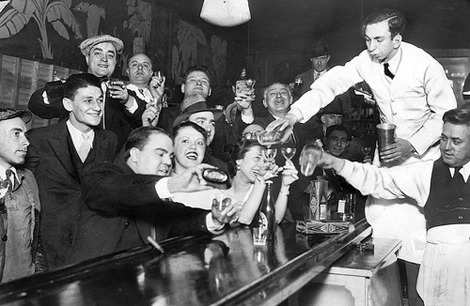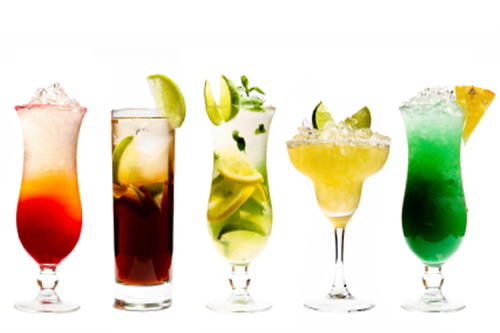Prohibition, Bad Booze, and the Rise of the Cocktail.When Prohibition became the law of the land in
Prohibition, Bad Booze, and the Rise of the Cocktail.When Prohibition became the law of the land in 1919, the production and consumption of alcohol became dominated by the black market. All over the United States rumrunners, bootleggers, and moonshiners found ways to either smuggle booze into America or produce their own. Often many of those who produced illegal alcohol were very seedy people. Since they answered to no laws or regulations, often the products they produced were weird and bizarre concoctions which amounted to little more than rotgut.One common route of alcohol production was to distill it from industrial forms of alcohol such as solvents, cleaners, and fuels. One of the most popular methods among the desperate was to produce a rough form of liquor from a product called Sterno a.k.a. “canned heat”, which was a popular fuel for camping stoves and portable burners. Still produced today, Sterno is a form of jellied alcohol which comes in a can. Those who were desperate enough to try and drink it would squeeze the jelly through a handkerchief to produce a liquid substance. Often, bad liquor was downright dangerous, as moonshiners and bootleggers failed to distill dangerous chemicals from their ingredients. In 1906 (before prohibition) the US government ordered all industrial, medical, and non-beverage forms of alcohol to be denatured. This is a process in which a solution of 10% methanol is added. Unlike ethanol, which can be consumed, methanol is a highly toxic form of alcohol which cannot be consumed. Denaturing was done to discourage people from using non-beverage forms of alcohol recreationally. Other substances were also added which made gave the product a terrible taste and smell.The use of denatured alcohol had a terrible unexpected consequence. Producers of illegal booze continued to use industrial alcohol for their products, either unaware or apathetic to the fact that their ingredients contained poison. Others were unable to distill the methanol from the ethanol. Still others were so unscrupulous that they cut their booze with chemicals to enhance their profits. As a result the number of deaths due to poisoned alcohol rose sharply with the passage of Prohibition. Thousands died, thousands more suffered the effects of methanol poisoning, most notably blindness. By 1926, 275 New Yorkers had died from poisoned booze. On New Years Eve 41 people died in New York from poisoning. By the end of Prohibition in 1933, it is estimated that 10,000 people had died of bad booze.Needless to say, Prohibition era booze was often sketchy at best. This led to another unintended consequence, the rise in popularity of cocktails. The mixing of cocktails goes back hundreds of years, however it was Prohibition that would make modern fruity cocktails popular today. Before prohibition most cocktails were mixtures of different spirits, such as the martini (gin and vermouth) for example. Sometimes sugar, sours, or bitters were added. However by Prohibition bartenders found that they often had to serve liquors of questionable quality. Often bartenders would mix the booze with fruit juices, spices, syrups, soft drinks, and fruity liqueurs to hide the taste of less than savory ingredients in their liquor. As a result the popularity of mixed drinks exploded, and continued in popularity up to this day. In addition Prohibition also made foreign liquors, such as Canadian whiskey, tequila, and rum popular because they could be easily smuggled into the United States.Today denaturing alcohol is still practiced for the same reasons it was practiced during Prohibition.A Prohibition Era Cocktail: The ColonyServed in New Yorks Colony, a high end restaurant which served illegal booze during Prohibition.1 ½ oz of gin¾ oz of grapefruit½ teaspoon of grenadineShake well with cracked ice, strain into a chilled cocktail glass. -- source link
Tumblr Blog : peashooter85.tumblr.com
#history#prohibition#denatured alcohol#drinking#alcohol#mixology#bartending#cocktails#mixed drinks#death#bootleggers#rumrunners


